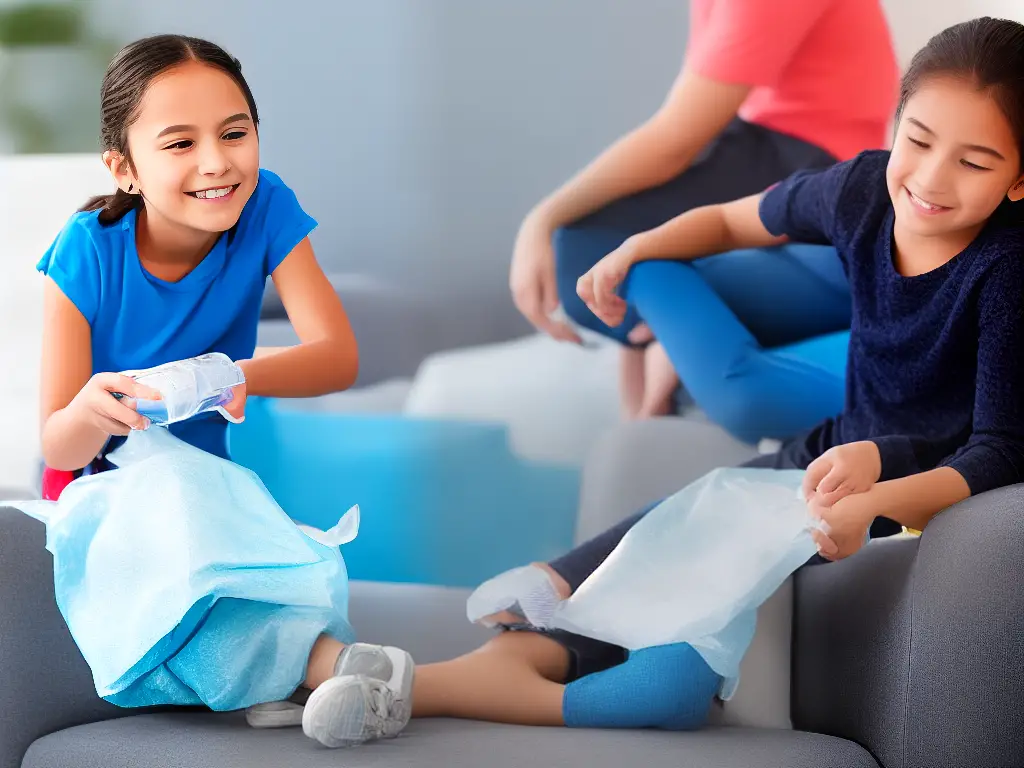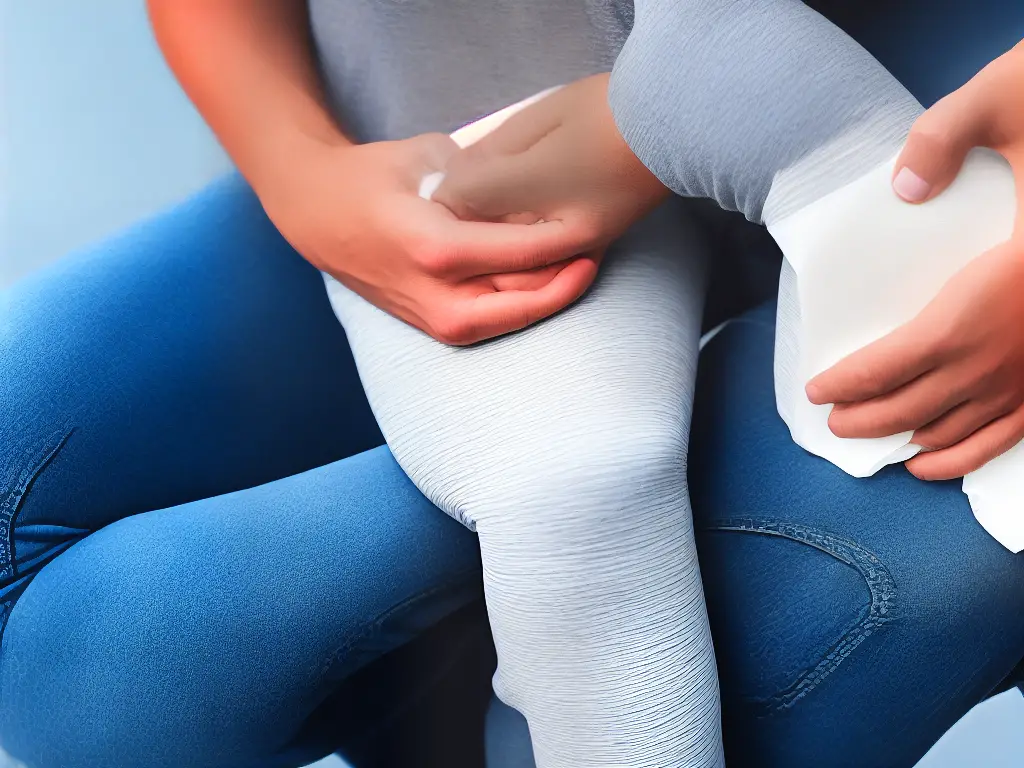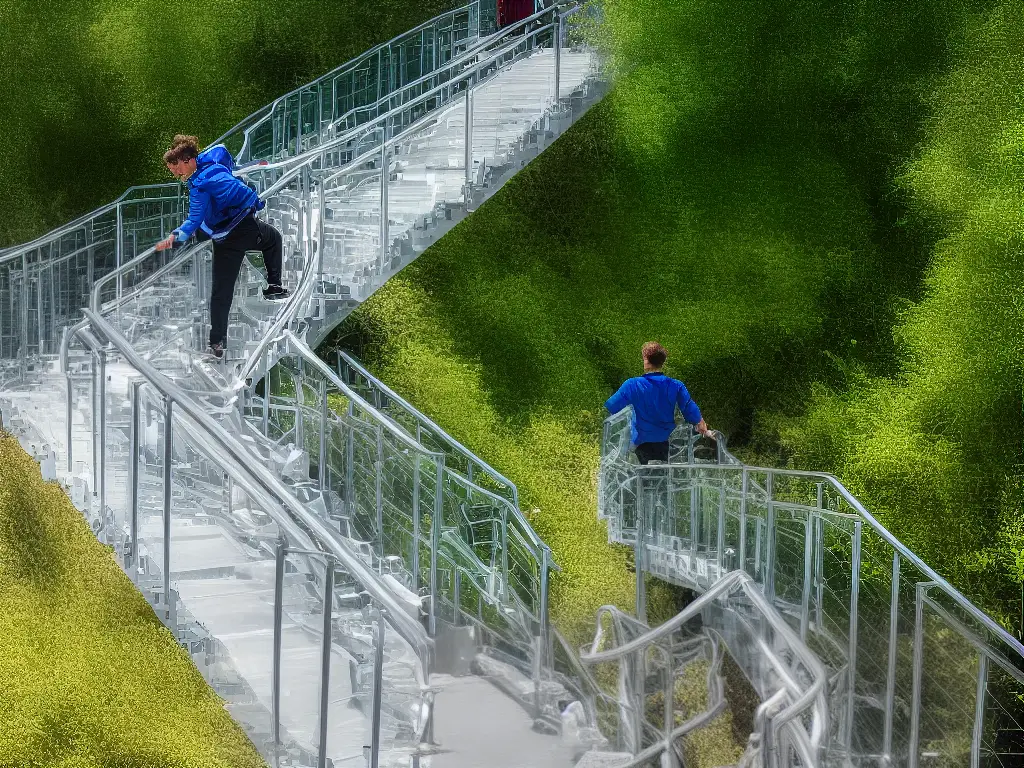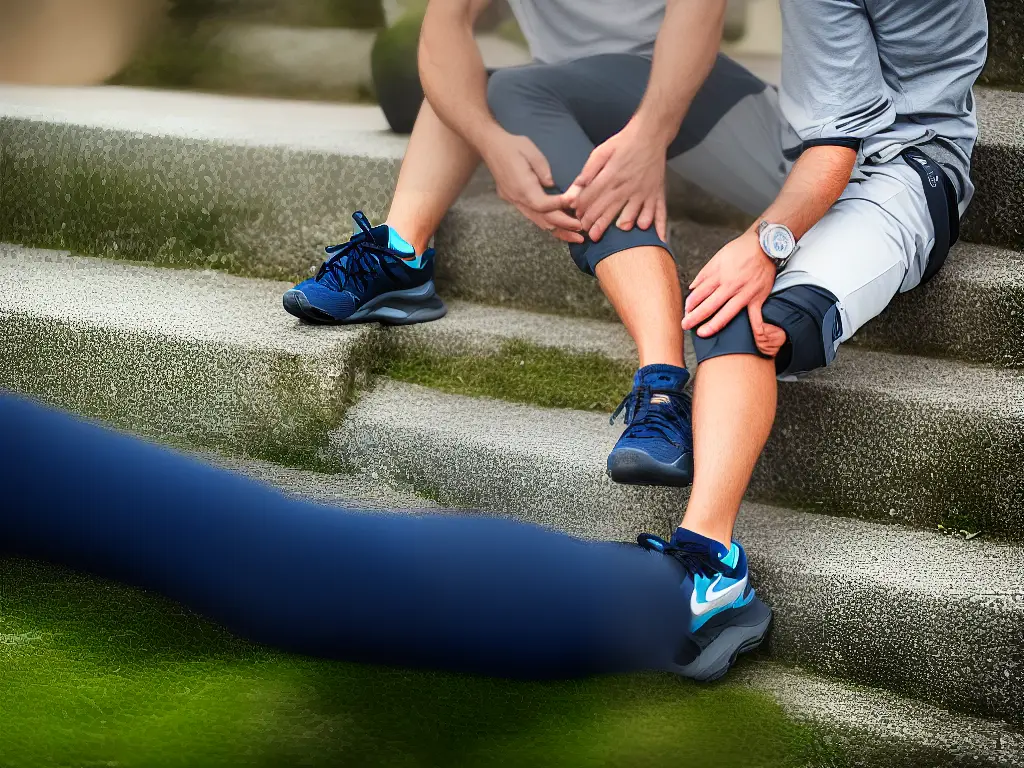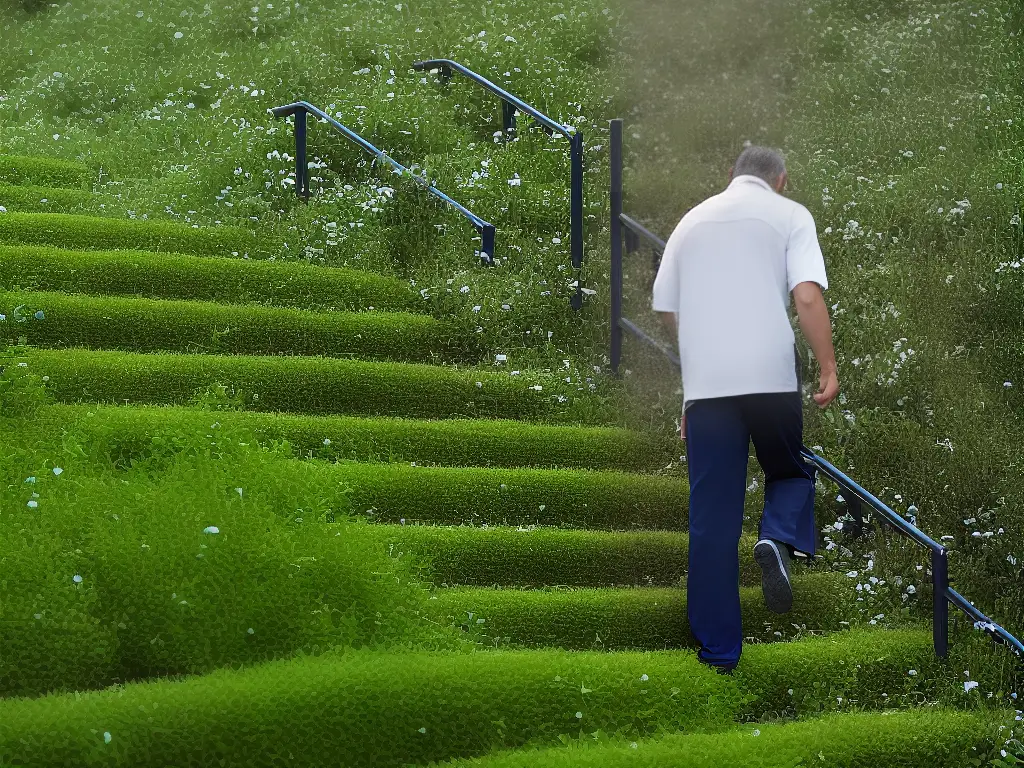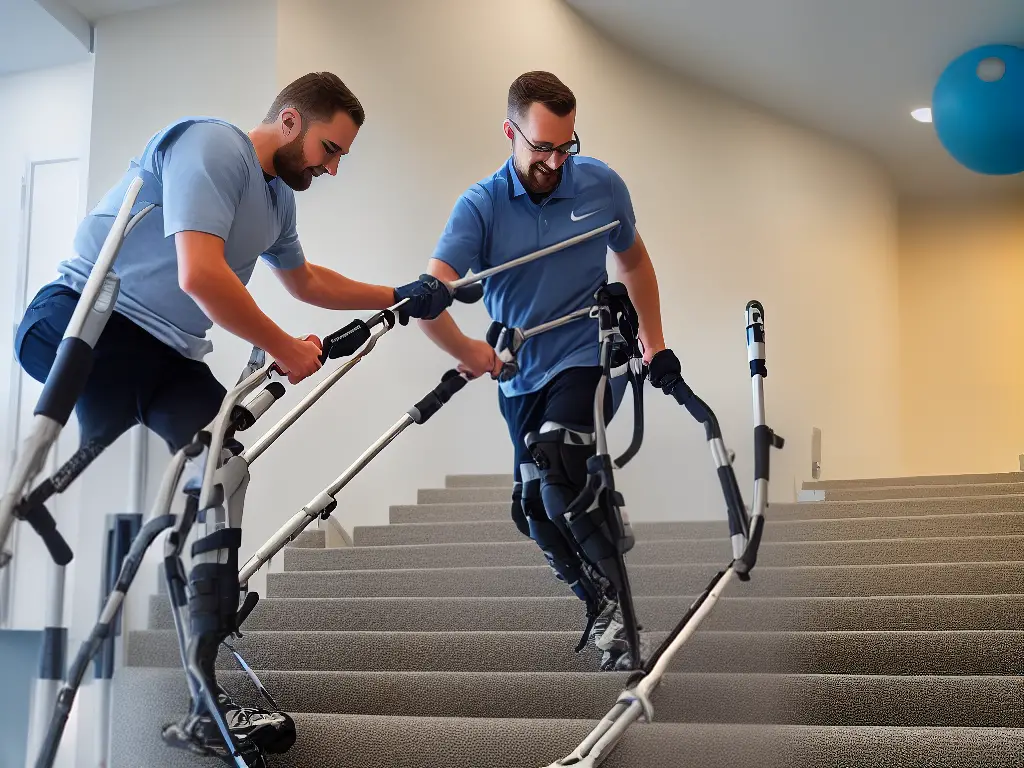Knee pain is a common complaint among people of all ages, and navigating stairs can exacerbate the problem for many. The complex structure of the knee joint, along with various factors and conditions that contribute to knee pain, make it essential for individuals to understand and manage their symptoms. This exploration of the anatomy of the knee, diagnosing knee pain, treatment options, preventive measures, and assistive devices aims to provide valuable information for those seeking guidance on managing knee pain while using stairs.
Anatomy of the Knee
The knee joint connects the thigh bone (femur) to the shin bone (tibia) with the kneecap (patella) in front, providing stability and flexibility for movement such as walking, running, and climbing stairs.
There are four main components of the knee joint: bones, ligaments, tendons, and cartilage. The bones create the structure and support of the joint, while the ligaments connect bones to provide stability. The tendons attach muscles to bones, and the cartilage cushions the space between the bones, allowing for smooth gliding movements.
The knee joint has two types of cartilage: articular cartilage and the meniscus, which provides cushioning and shock absorption. Damage or wear to either type of cartilage can lead to knee pain when climbing or descending stairs.
Ligaments play a significant role in preventing excessive movements of the knee joint, such as the anterior cruciate ligament (ACL), posterior cruciate ligament (PCL), medial collateral ligament (MCL), and lateral collateral ligament (LCL). Overstretching or tearing of these ligaments can lead to instability and pain in the knee when navigating stairs.
The quadriceps and patellar tendons provide extension and stabilization necessary for stair climbing. Inflammation of these tendons, termed tendonitis, can stem from overuse or injury, causing pain and reduced function during activities that place stress on the joint.
In order to understand knee pain associated with stair use, it is essential to comprehend the structure and function of the complex knee joint anatomy, which includes bones, ligaments, tendons, and cartilage. Damage or wear to any of these parts can lead to pain and discomfort, particularly when navigating stairs.

Common Causes of Knee Pain on Stairs
Various factors and conditions can cause knee pain on stairs, such as patellofemoral pain syndrome (PFPS), also known as runner’s knee. PFPS is characterized by pain around the kneecap (patella) and often worsens during activities that put increased stress on the knee joint, like walking up or down stairs, climbing, and running. This condition can result from muscle imbalances or weaknesses, overuse, or malalignment of the kneecap, highlighting the importance of identifying and treating the underlying causes of knee pain.
Another common cause of knee pain on stairs is osteoarthritis, a degenerative joint disease that causes the cartilage in the joint to break down over time. This wear and tear can lead to pain, stiffness, and swelling in the knee, particularly during weight-bearing activities such as walking or climbing stairs. Osteoarthritis is more prevalent in older individuals and can be exacerbated by obesity, previous joint injuries, and a sedentary lifestyle.
Meniscus tears are another potential cause of knee pain when navigating stairs. The menisci are C-shaped pieces of cartilage in the knee joint that act as shock absorbers and provide stability. Tears can occur as a result of trauma, such as a sports injury, or degeneration due to age and wear. Meniscus tears can cause pain, swelling, stiffness, and a sensation of the knee “catching” or “locking” during movement. The pain and discomfort associated with a meniscus tear may worsen when walking up or down stairs due to the increased load on the knee joint.
Tendinitis and bursitis are additional factors that can contribute to knee pain on stairs. Tendinitis involves inflammation of the tendons surrounding the knee, often resulting from overuse or strain, while bursitis is inflammation of the small, fluid-filled sacs (bursae) that help cushion the joint. Both conditions can cause pain that worsens during activities requiring knee flexion and extension, such as climbing stairs.
Knee pain can often be experienced during the simple activity of using stairs, whether going up or down. This pain can be indicative of a variety of underlying issues related to the structures within the knee joint. One common cause is iliotibial band syndrome (ITBS), a condition characterized by inflammation of the iliotibial band, a thick band of connective tissue that runs along the outside of the thigh from the hip to the knee.

Diagnosing Knee Pain
ITBS is often caused by overuse or improper biomechanics during physical activity and can result in pain on the outer side of the knee during activities like walking or descending stairs. Treatment for knee pain on stairs depends on the underlying cause, and it is essential to consult with a healthcare professional for a proper diagnosis and appropriate management strategies. By addressing the root of the issue, you can work towards alleviating your knee pain and improving your overall mobility and quality of life.
Healthcare professionals utilize several methods to accurately diagnose the root cause of knee pain, which ultimately helps determine the most suitable treatment option. A proper diagnosis begins with a detailed history and physical examination, followed by imaging studies and, if necessary, gait analysis.
Physical Examination
The physical examination allows healthcare professionals to assess the structures within the knee joint and evaluate the possible causes of knee pain. This may include palpating the joint for any abnormalities, such as swelling or tenderness, assessing the range of motion, and identifying any signs of instability or weakness. The healthcare provider may also assess the patient’s walking pattern and examine the alignment of the lower extremities for any contributing factors, such as flat feet or excessive pronation.
Imaging Studies
Imaging studies, such as X-rays and magnetic resonance imaging (MRI), are crucial tools for diagnosing the underlying cause of knee pain, especially when it comes to visually observing the knee joint’s internal structures. X-rays are commonly utilized to assess the bones, joint space, and overall alignment, providing insight into fractures, degenerative changes, and possible malalignment of bones. In cases where soft tissue damage is suspected, such as meniscal or ligament tears, an MRI may be ordered. MRI offers a more in-depth view of the soft tissues, cartilage, and ligaments, facilitating a more detailed and accurate diagnosis.
Gait Analysis
In some cases, healthcare professionals may also utilize gait analysis to further examine the biomechanics of the knee joint while walking or running. Gait analysis can help to identify any abnormalities that may contribute to knee pain, such as imbalances, poor movement patterns, or incorrect footwear. This information can be used to create a targeted treatment plan, including physical therapy or the use of orthotic devices to correct biomechanical issues.
Recognizing and addressing knee pain related to stairs entails a comprehensive evaluation of the knee joint and its surrounding structures. This usually combines the patient’s medical history, physical examination, imaging studies, and gait analysis in order to have an all-inclusive understanding of the root cause and feasible solutions. By pinpointing the underlying issue, healthcare professionals can effectively recommend and administer the most appropriate treatment plan, leading to better management of knee pain and enhanced quality of life.

Treatment Options for Knee Pain
Experiencing knee pain during ascending or descending stairs can be both frustrating and painful, suggesting a problem with the knee joint or the adjacent muscles, tendons, and ligaments. A prevalent treatment method for dealing with knee pain is physical therapy, which may include strengthening exercises, stability exercises, and stretching aimed at improving flexibility. Physical therapy aims to restore strength, stability, and mobility to the knee, leading to decreased pain and increased function. This non-invasive treatment approach is usually recommended as an initial step, as it has the potential to yield significant improvements in numerous cases without requiring medication or more aggressive treatments.
For cases in which knee pain may be caused or exacerbated by inflammation, medication can be a valuable addition to conservative treatment methods. Over-the-counter anti-inflammatory medications, such as ibuprofen, can help reduce inflammation and minimize pain. In some cases, a medical professional may also prescribe stronger anti-inflammatory drugs, corticosteroid injections, or even hyaluronic acid injections to help alleviate pain and improve knee joint function. It is important to note that utilizing medications for treatment should always be done under the supervision of a healthcare provider to ensure safety, effectiveness, and potential side effects are managed appropriately.
In addition to physical therapy and medication, lifestyle changes may be recommended to help address the cause of knee pain on stairs. These changes can include weight loss to reduce stress on the knee joint, wearing knee braces or using kinesiology tape for added support during physical activity, and choosing low-impact bodyweight exercises or suspended strength training exercises that place less stress on the knee joint. Additionally, working to develop muscle balance and flexibility throughout the legs can help alleviate knee pain and contribute to improved overall function.
Sometimes, conservative treatments are not sufficient for relieving knee pain, and surgical interventions may be necessary. Arthroscopy is a minimally invasive procedure wherein a small camera is inserted into the knee joint to diagnose and treat issues within the joint. This can involve removing or repairing damaged cartilage, ligaments, or other structures that may be contributing to the knee pain. Recovery from arthroscopy is typically quicker than other more invasive surgical options.
Severe knee pain that does not respond to conservative treatment options or arthroscopy may require total knee replacement surgery. In this procedure, the damaged knee joint is replaced with an artificial one made from metal and plastic components. This surgery can provide significant pain relief and improved knee function, although it involves a longer recovery period and potential risks, such as infection or blood clots. As with any medical procedure, the decision to undergo knee replacement surgery should be based on a thorough discussion with a healthcare professional to weigh the potential benefits and risks.

Preventing Knee Pain on Stairs
Before reaching the decision to undergo surgery, it is important to consider the activities that may exacerbate knee pain, such as climbing or descending stairs. Stairs can put significant strain on the knee joints, leading to knee pain or aggravating existing knee problems. Fortunately, there are several strategies one can implement to prevent knee pain when using stairs, which may improve overall knee function and postpone or even eliminate the need for surgical intervention.
To maintain good body mechanics on stairs, start by considering your foot placement. Lead with your heel when stepping up and your toes when stepping down. Doing so ensures that your foot is in the correct position to engage the knee joint optimally. Additionally, it is essential to maintain proper posture while using stairs, keeping your chest lifted and spine straight. This posture helps to distribute your body weight evenly through the legs and knees instead of concentrating it in certain areas.
Besides body mechanics, it is crucial to strengthen the muscles surrounding the knee joint, as weak muscles can increase the risk of knee pain and injury. Focus on exercises that target your quadriceps, hamstrings, and calf muscles to support the knee joint. Some examples of such exercises include lunges, leg presses, calf raises, and hamstring curls. Remember to start slow and gradually increase the intensity of your workouts to avoid overworking your knees.
Incorporating stretching exercises into your fitness routine can also help prevent knee pain on stairs. Tight muscles can pull on the knee joint, causing pain and increasing the risk of injury. Regular stretching will help improve your flexibility and reduce muscle tension, reducing the strain on your knees as you use stairs. Make sure to stretch gently and gradually, warming up your muscles before you engage in more intense activities, including stair climbing.
Wearing footwear that provides appropriate support and cushioning is an essential factor in preventing knee pain on stairs. Shoes that offer proper arch support help distribute your body weight evenly across your feet, relieving stress on the knee joint. Moreover, well-cushioned shoes can help absorb some of the impact while using stairs, further reducing the stress on your knees. Investing in good-quality footwear designed for your foot type and walking style can significantly improve your comfort while navigating stairs and minimize the risk of knee pain.
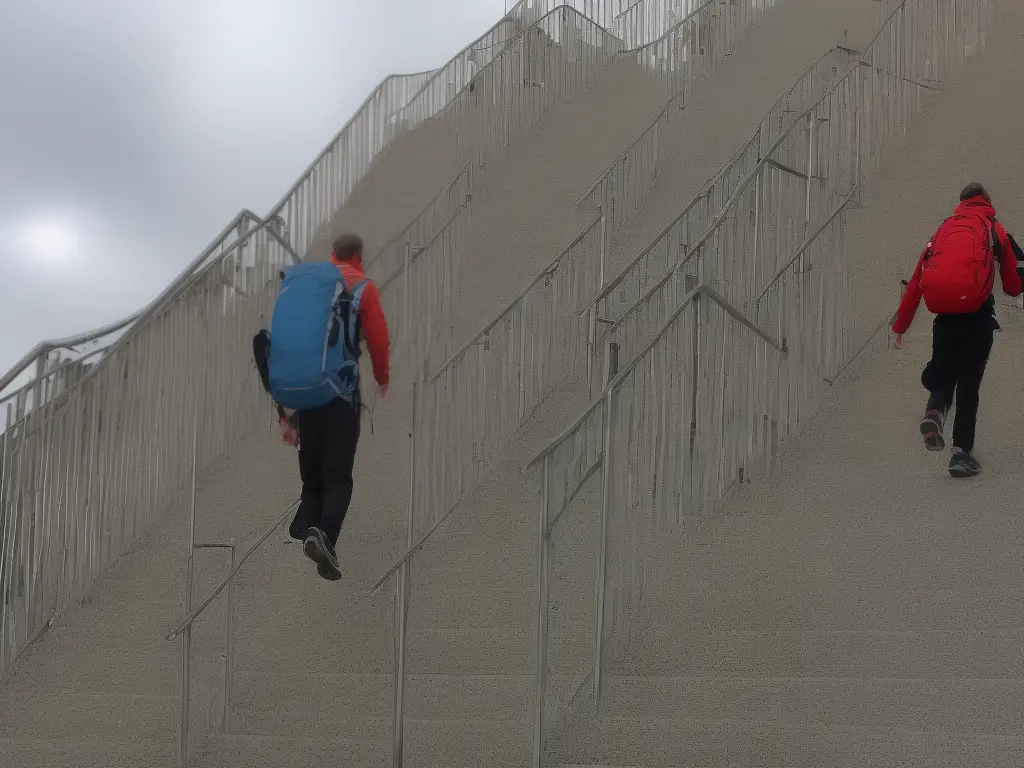
Assistive Devices and Home Modifications
In addition to proper footwear, assistive devices and home modifications can play a crucial role in alleviating knee pain for individuals who experience discomfort when climbing or descending stairs. This can be particularly beneficial for those with conditions such as arthritis or previous knee injuries. By making these adjustments, people can improve their ability to navigate stairs comfortably and reduce the strain on their knees.
Braces and orthotics can offer additional support and stability to the knee joint, alleviating pain and reducing the pressure on the affected area. Knee braces come in a wide range of styles and materials, allowing users to choose one that best fits their needs and preferences. Some braces provide general support while others are designed for specific conditions, such as patellar tracking braces used to address patellofemoral pain syndrome. Orthotic shoe inserts can also help by improving foot alignment, thus distributing weight more evenly when walking, climbing, or descending stairs. These assistive devices are typically non-invasive and can be found at medical supply stores or online retailers.
In addition to assistive devices, home modifications can significantly reduce the challenges associated with stair navigation for individuals with knee pain. Installing handrails on both sides of the staircase can provide extra support and stability, allowing the user to distribute their weight more evenly and reduce strain on the knees. Additionally, proper lighting can greatly enhance visibility and safety when using stairs.
For those who experience severe knee pain or have limited mobility, stairlifts can be a transformative home modification. A stairlift consists of a chair or platform that moves along a rail system installed on a staircase. This allows the user to be transported between floors without having to climb or descend the steps. Stairlifts can be customized to fit various staircase designs, such as straight or curved layouts. Some models even have folding platforms that can accommodate users with mobility aids like wheelchairs or walkers, offering an all-in-one solution for accessibility within the home.
Experiencing knee pain while navigating stairs can significantly affect an individual’s quality of life. However, assistive devices and home modifications can greatly enhance one’s independence and comfort in such situations. Examples include the use of braces and orthotics to provide additional support during stair navigation and home modifications like handrails, lighting, and stairlifts to make the home environment more accommodating and safe. These tools empower individuals to continue enjoying the freedom and convenience of their homes despite knee pain or decreased mobility.

Real-World Scenarios and Case Studies
A common cause of knee pain while using stairs is patellofemoral pain syndrome (PFPS), also known as runner’s knee. This condition is characterized by pain in the front of the knee and around the kneecap. For instance, a case study published in the Journal of Orthopaedic & Sports Physical Therapy reported a 32-year-old female who experienced bilateral knee pain due to PFPS. Her pain was primarily caused by running, walking down stairs, and squatting. By employing a treatment plan that included hip-strengthening exercises, knee taping, and gait retraining, her knee pain significantly decreased within eight weeks. This example demonstrates how a combination of therapeutic strategies can be effective in managing knee pain related to stair navigation.
Another example is a middle-aged man who began experiencing knee pain, particularly during descending stairs. Upon examination, he was diagnosed with early-stage osteoarthritis in both knees. This degenerative condition affects the cartilage in the knee joint, causing inflammation and pain during weight-bearing activities like walking up and down stairs. In this case, the man’s treatment plan included gentle quad-strengthening exercises, weight loss, and joint mobilization techniques performed by a physical therapist. With continued treatment, he saw a decrease in pain and improved function navigating stairs.
In yet another case, a 28-year-old professional soccer player developed pain in his left knee following an injury. He reported increased pain and difficulty during stair climbing, particularly in the down phase. Upon evaluation by an orthopedic surgeon, the athlete was diagnosed with meniscal damage. As menisci act as shock absorbers in the knee joint, damage to them can cause knee pain during weight-bearing activities like stair climbing. In this case, the athlete underwent arthroscopic surgery to fix the meniscal tear, followed by a guided rehabilitation program to regain strength and stability in the knee. By focusing on functional exercises targeting balance, agility, and strength, he successfully returned to play within eight weeks after the surgery.
In a case involving an older adult, a 67-year-old woman presented with knee pain while walking up and down stairs, as well as during prolonged standing or sitting. She was diagnosed with knee osteoarthritis, a common condition among seniors due to wear and tear on the cartilage over time. Treatment for her condition began with a conservative, non-surgical approach, including low-impact exercise such as water aerobics, walking, and strengthening exercises for the quadriceps and hamstrings, along with over-the-counter nonsteroidal anti-inflammatory drugs (NSAIDs). Significant improvements in her knee pain were observed after several months of consistent adherence to the treatment regimen.
In each of these cases, the cause of knee pain during stair climbing was different, and the treatment approach varied accordingly. It is essential for those experiencing knee pain to seek proper evaluation from a medical professional in order to establish the appropriate treatment plan and address any underlying factors contributing to the pain. By employing a targeted approach to address the causes of knee pain, individuals can work towards regaining mobility, strength, and comfort during activities such as stair climbing.

Throughout this comprehensive exploration, one can gather the necessary knowledge to better understand knee pain and the specific challenges associated with using stairs. From identifying common causes to undergoing diagnosis, implementing treatment options, and employing preventative strategies, individuals can take steps towards reducing their discomfort and improving their overall quality of life. By examining real-life scenarios and considering assistive devices or home modifications, a proactive approach can be cultivated, paving the way for enhanced well-being and mobility.


















